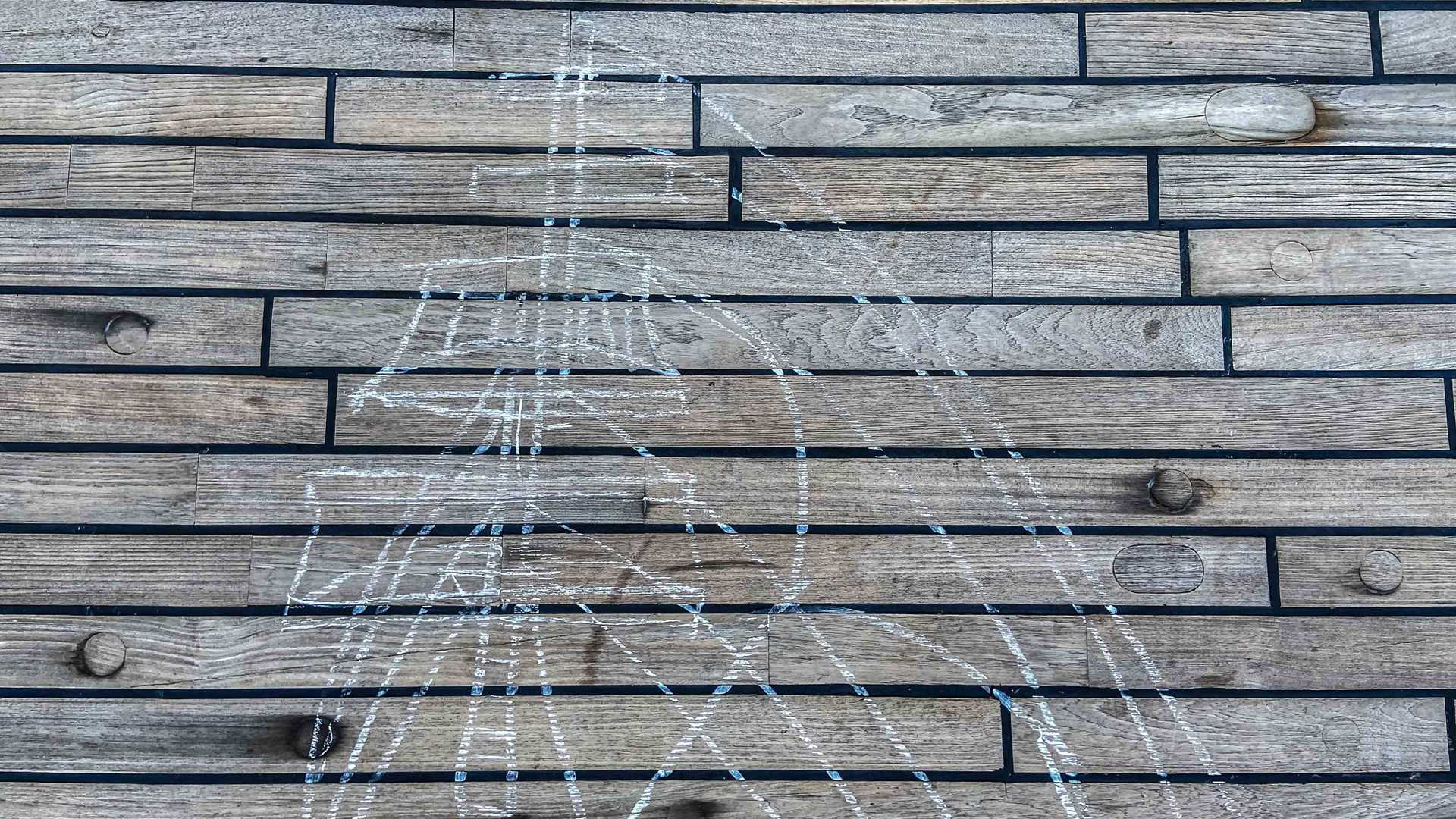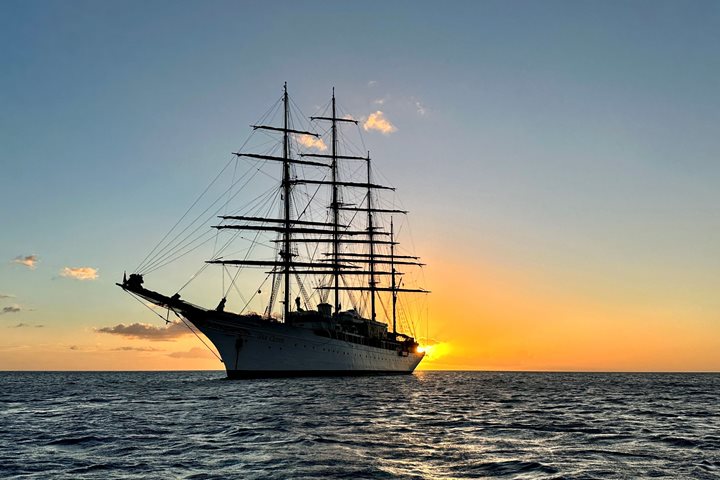The sun rose off Mount Pleasant in Bequia at 6:10 a.m. and we weighed anchor for our next port, Carriacou, by 7 a.m. We had a great wind and were making eight knots at 11 a.m. Tom Heffernan gave an introductory talk on the Creole languages of the Caribbean, so we were prepared to listen and delight in learning more about the local speech.
We are sailing ever southward on our journey to the Grenadines, nearly 700 miles away from the equator. We are now as far south as we shall travel and not far from South America. Just after noon, some of the guests, who had learned how to handle sails from first officer John Svendsen, joined the crew in hauling down the sails. They soon found out how very difficult this task is!
We dropped anchor in Tyrell Bay and boarded tenders for our exploration of this small but charming island. We were now in the Grenadines—those governed by Grenada, not St. Vincent. This small state consists only of three islands: Grenada, Carriacou, and Petite Martinique. The Amerindians called this island Kayryouacou, which meant “the land surrounded by reefs” in the Arawakian-Indian language. Like St. Lucia this island went back and forth between French and British overlords but was finally ceded to the English in 1783 and achieved its independence in 1974.
It is tiny at 13 square miles and has a population of about 6,000. The highest mountain on the island is High Point at a perilous 955 feet. There are also no rivers here—we saw that immediately as we drove through the arid island. Without sufficient rain, they have to bring water in from Grenada by ship.
We met our wonderful local guide Alison at the Mermaid Hotel and began our tour of the town. With two main streets, it is quite substantial! We visited a friendly grocery store where the proprietor showed us the sorts of foods that comprise the local diet. At the rear of the shop I noticed a rum labeled “White Rum” at 139 proof for about $4–sufficient to make one tipsy for a week. Those of us who ended back at the hotel enjoyed a refreshing drink at the bar, just steps from a pristine beach and turquoise waters.
The Carriacou people have a long history of ship-building and fishing and to this day are remarkable fishermen. Many emigrated in the ‘50s and ‘60s to work in England. A great number live in Bedford and have now returned home to retire and build very nice homes.
Those of us who went snorkeling on Sandy Island reported that it was very good. Sandy Island is now a designated wildlife sanctuary and protected. It is a small-uninhabited atoll that sits about half a mile off our other location of the day, Paradise Beach, aptly named.
Back on Sea Cloud we had a wonderful meal in the dining room and Simon, our excellent hotel manager, introduced us to his respectable staff.









